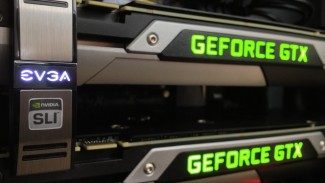With major consumer VR headsets on the precipice of shipping, NVIDIA’s has put virtual reality among the top focuses of their annual GTC conference coming next month.
Hosted in San Jose, CA, from April 4-7, GTC 2016 is all about GPU computing. And this year, the company is making virtual reality a top topic of the event, with a dedicated VR track featuring 45 talks and sessions from speakers across the industry.
Featured speakers include Jaunt VR CTO, Arthur Van Hoff; ILMxLab Principal Engineer, Lutz Latta; and Unity Principal Engineer, Amir Ebrahimi, who will be respectively speaking about large-scale video processing for VR, the technology powering ILMxLab’s immersive experiences, and the opportunity for VR in training, teaching, and creation tools.
That’s just three sessions among more than 40 others from companies like OTOY, Audi, and Autodesk. You can browse the full list of VR sessions coming to GTC 2016 here. The GPU-focused conference will also include the VR Village where attendees can explore the latest advances in VR technology and the GPUs making it possible.
Taking place during GTC is the ECS VR Showcase which has accepted eight young companies which will present their virtual reality works on stage to compete for $30,000 in cash and prizes.
Save 20% on a ticket to GTC through March 18th using the code VRSAVE20.

NVIDIA is naturally quite interested in virtual reality as the industry demands high-end GPUs for quality VR experiences. The company’s VRWorks initiative focuses on optimizing NVIDIA GPUs for optimal virtual reality rendering performance, with features like Multi-Res Shading, VR SLI, Context Priority, Direct Mode support for VR headsets, and more.
Road to VR is a proud media sponsor of GTC 2016







